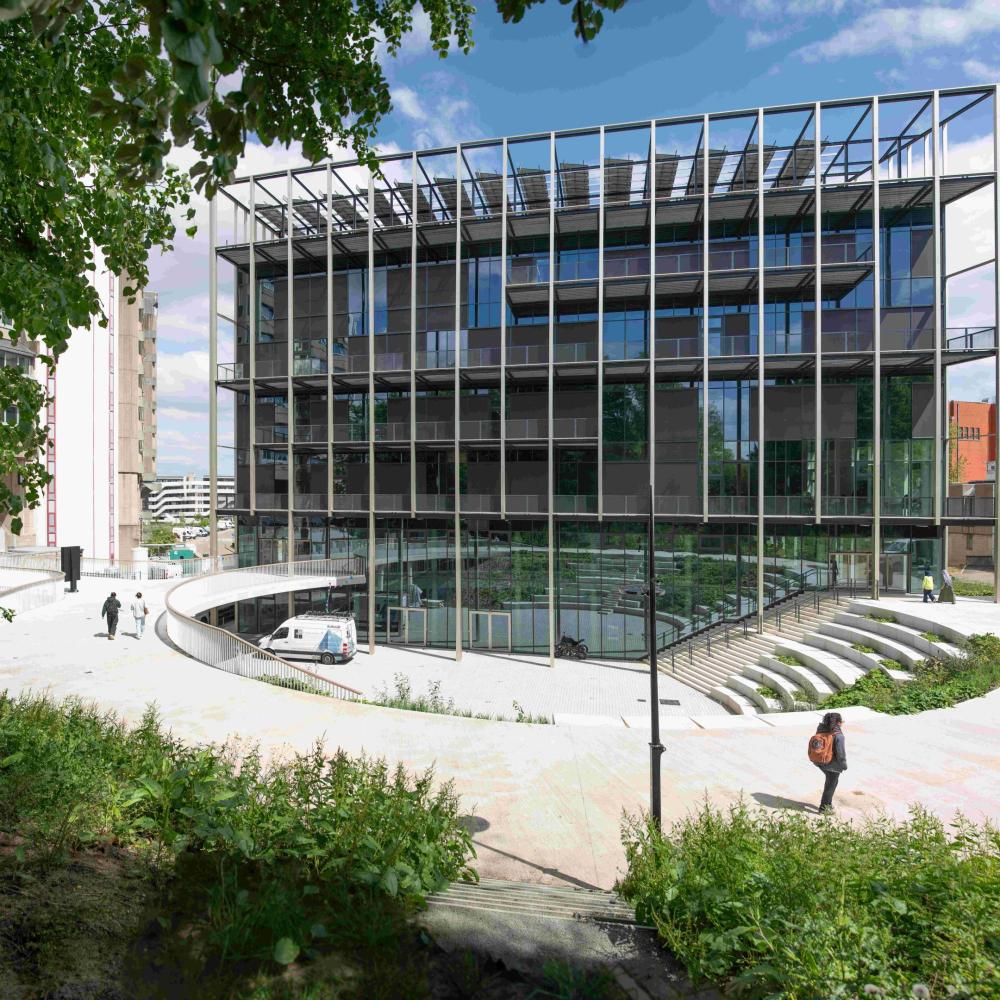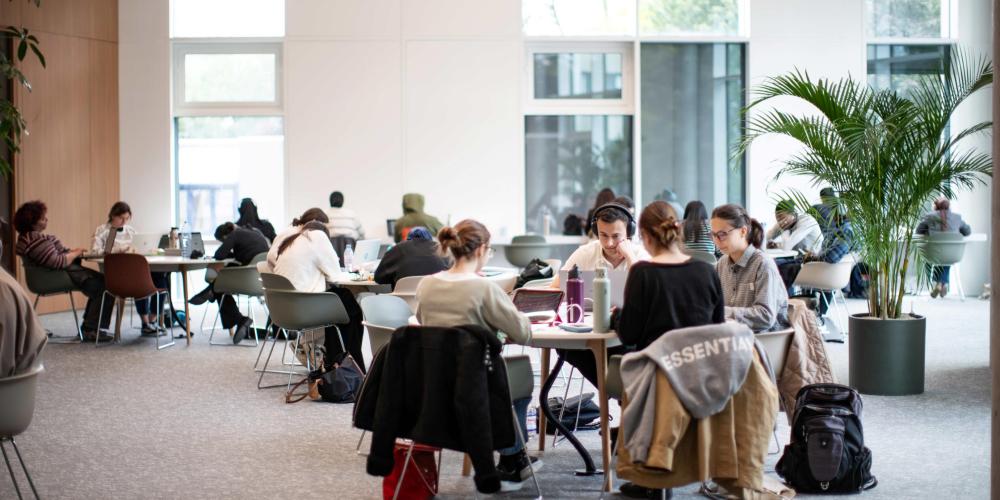
On May 14, the brand-new Learning and Innovation Center (LIC) officially opened its doors on the border between the VUB and ULB campuses. This state-of-the-art center not only creates space for learning and innovation but also builds bridges for collaboration between science, industry, and society. Curious how that works in practice? Hear it from the project leader, the director of the LIC, and the president of the Student Council.
Book your study spot, meeting room or classroom in the LIC now.
Annick Faveere, project leader, launched the construction of the LIC in 2016 together with honorary rector Paul De Knop
“The smart building aspect is highly advanced, and the entire structure has near zero emissions”
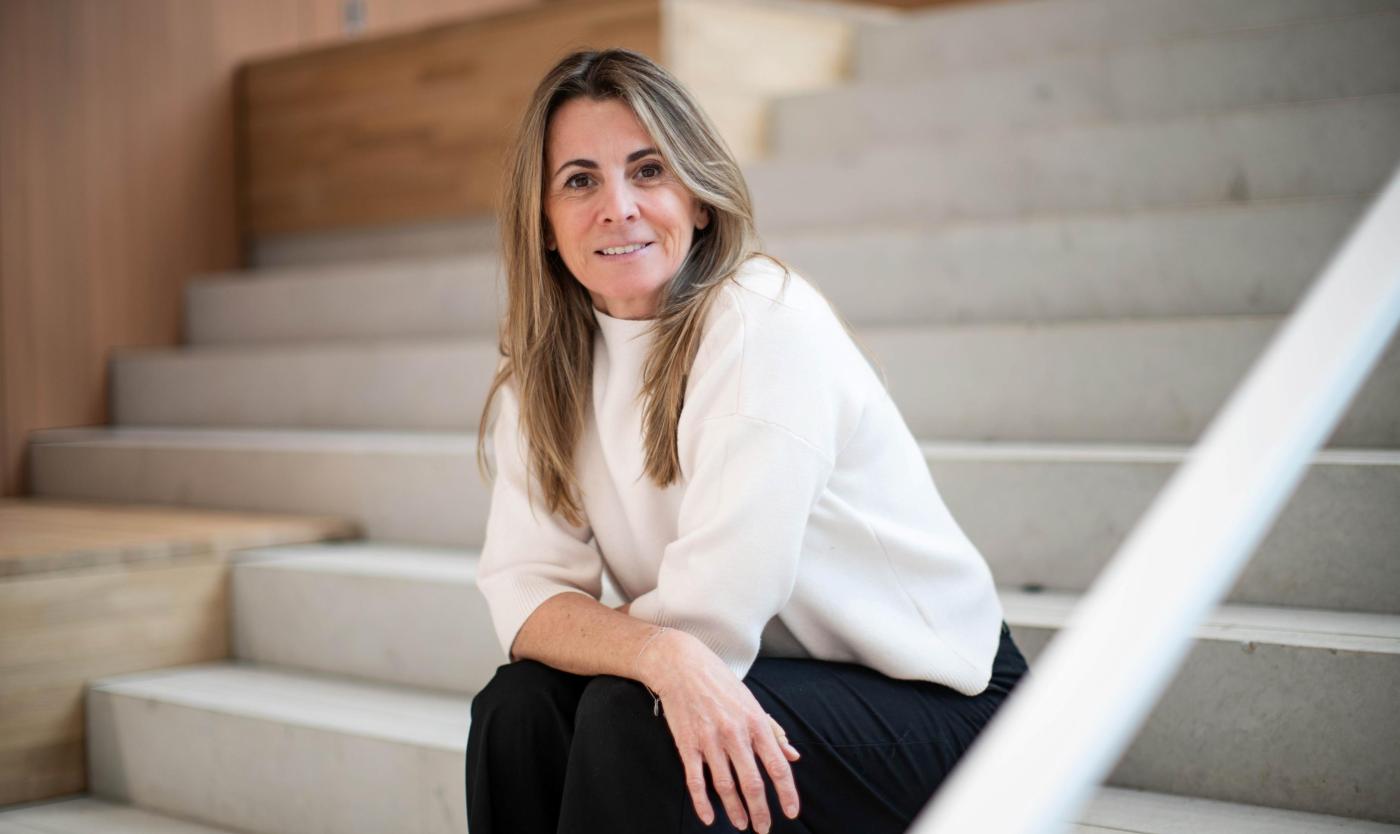
What was the original vision behind the LIC?
“The VUB and ULB had drifted far apart since 1970. Under the leadership of the then rectors Caroline Pauwels and Yvon Englert, the collaboration between the VUB and ULB was intensified. The original idea for the LIC was to create a new, shared, modern library on the border between the two campuses. This evolved into the current Learning and Innovation Center, which not only houses the Science Library but also offers around a thousand study spaces, collaborative classrooms, and student lounges. The building also provides various spaces for both students and staff, as well as for the external public. The entire construction was managed by Beliris, a generous gift worth about 25 million euros. VUB and ULB together contributed 13 million euros for the technical infrastructure (ICT, AV, Smartbuilding, etc.), furniture, the connecting bridge, and landscaping.”
Is it a state-of-the-art building as promised?
“The entire smart-building aspect is highly advanced. There is lighting controlled via the network. Each fixture has a sensor that detects presence per seat. It also serves as a data source for temperature, light intensity, movement, and presence. All these elements in the building communicate with the building management system, such as heating, CO2 levels, and electricity. The reservation system also makes it easier to book rooms and serve both VUB and ULB equally. Using an app on your phone, you can reserve spaces, see which ones are still available, check who’s sitting where, and get a guided tour of the building. This requires very sensitive software integration.”
“The LIC has near-zero emissions. Cooling is done through windows that can automatically open. The concrete in the building absorbs inertia, allowing the ventilation to run at much lower speeds. There’s automatic lighting and solar panels that power the heat pump, among other things. The building will more often need to be cooled rather than heated. A lot has also been invested in acoustics to ensure there are no disturbing sounds or echoes, despite the large rooms. The architects’ approach was to allow a lot of light into the building and organize the spaces so there is always a clear view throughout. Regarding visitor circulation, the lifts are deliberately hard to find, with wide staircases designed to encourage moveme
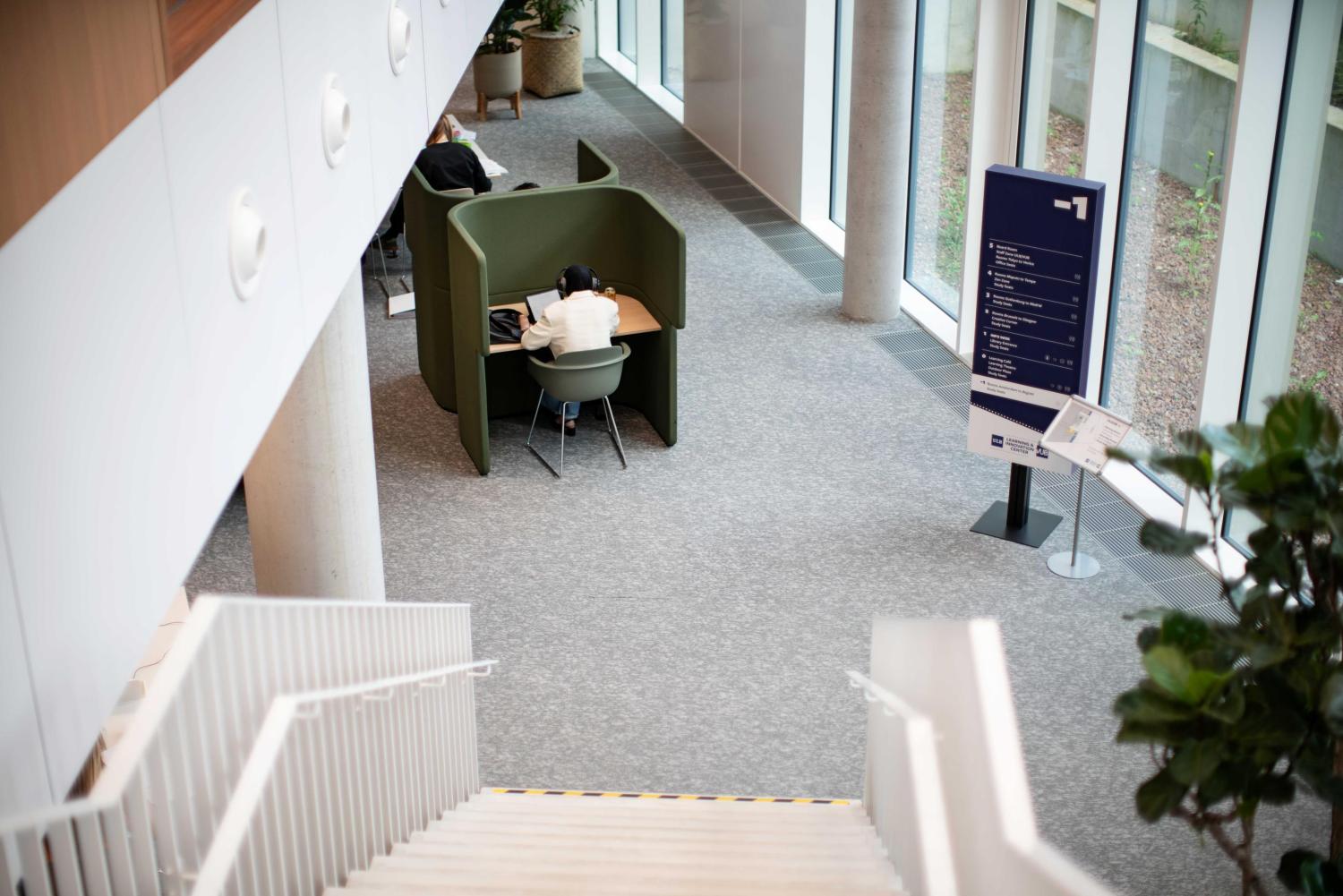
"The architects' approach was to let in plenty of light and organize the spaces so that there is always a clear line of sight throughout the building."
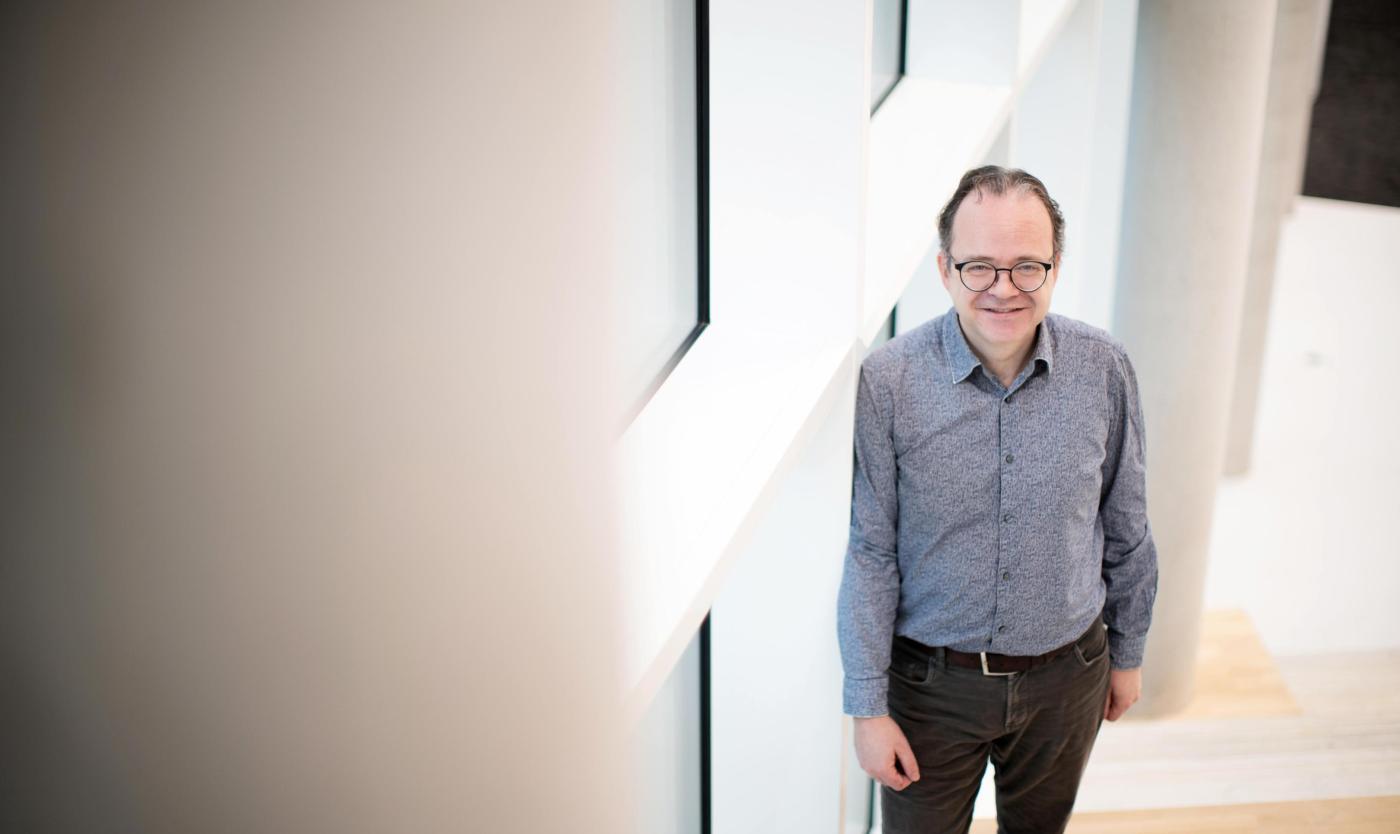
Peter Verbist, Director of the University Library and the LIC
“The LIC acts as an amplifier of our VUB services. We are happy to be the second '1' in 1+1=3”
What does the LIC address?
“The LIC is one of the structural answers to the growing pains of the VUB. The number of students is increasing, as are the spatial needs, which puts pressure on the campus. Conceptually, the LIC is unique in Belgium. It reflects a strong campus vision to realize this building in collaboration with ULB. It is also literally located at the intersection of both campuses.”
Does it play a pioneering role?
“‘Pioneer’ might sound like a heavy word, but I want to use it. First and foremost, it is a building that meets the highest standards of the 21st century. In terms of acoustics, it is very special, but also in terms of lighting, ventilation, temperature control, sustainability, and so on. A state-of-the-art infrastructure also requires appropriate services. We want to express three core values: openness, informality, and flexibility. We will be open every day of the year, except for December 25 and January 1. During teaching weeks, study and exam periods, we will be the only building on campus open from 8 AM to 11 PM. We also want to maintain an open mindset by responding to all the needs and requests that the LIC team will receive. The LIC is also informal and flexible: it is not a building with a single purpose. It is multifunctionally applicable. We offer a wide range of infrastructure that can be useful for every target group. For students, we provide numerous individual workspaces, offering a structural solution to space shortages during peak study periods. For staff, there will be a dedicated floor with touchdown spots and meeting rooms that can also be used for faculty meetings or for external contacts with businesses and the city of Brussels. We also offer facilities for teachers: seven classrooms equipped for innovative, collaborative, and active teaching, with opportunities for breakout sessions in small groups. And for services, it can be pleasant to hold a brainstorming session in an inspiring environment. In the LIC, the social capital of our university is gathered, and services can tailor their activities to it. The LIC acts as an amplifier of our VUB services. We are happy to be the second ‘1’ in 1+1=3.”
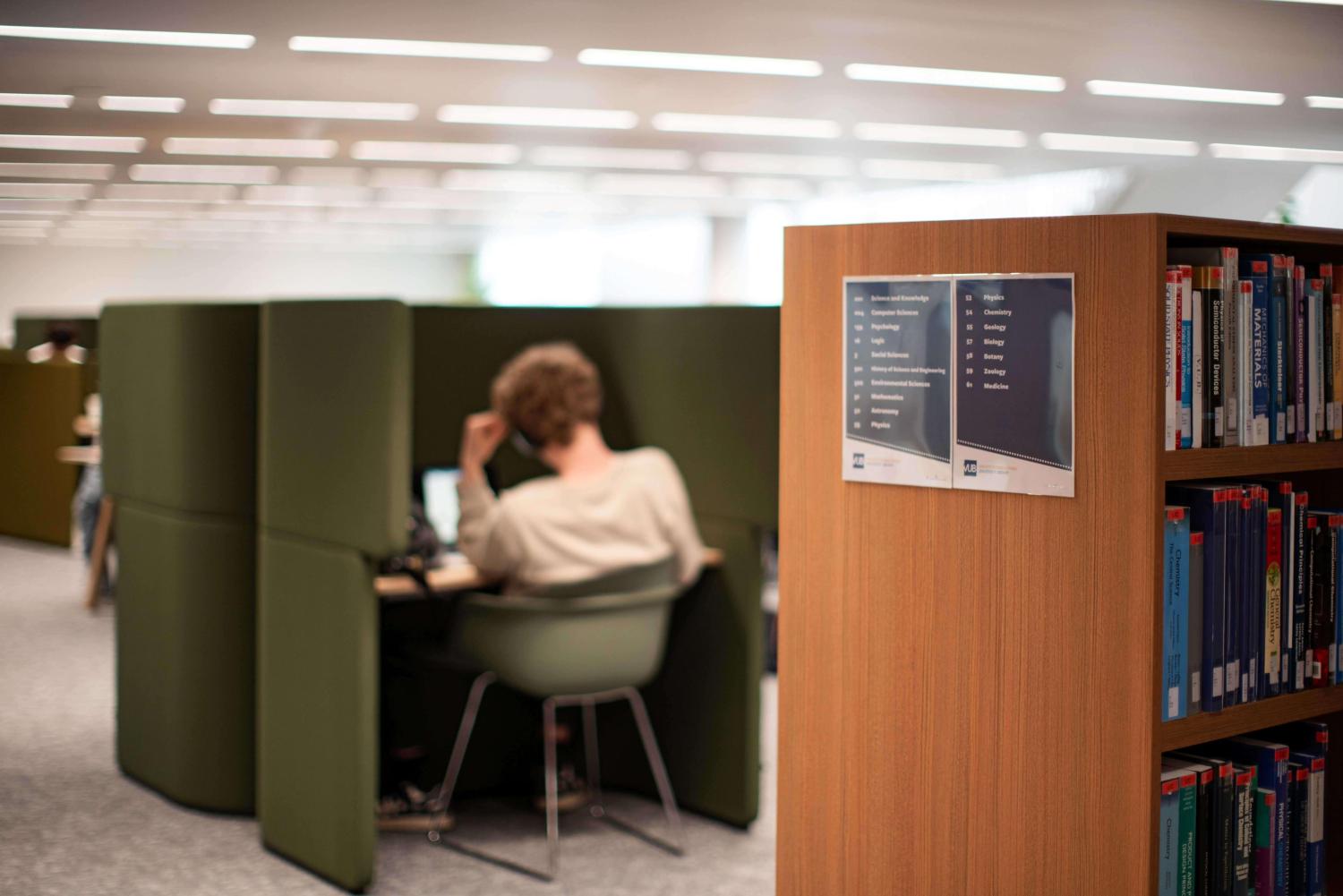
The LIC is more than a traditional library.
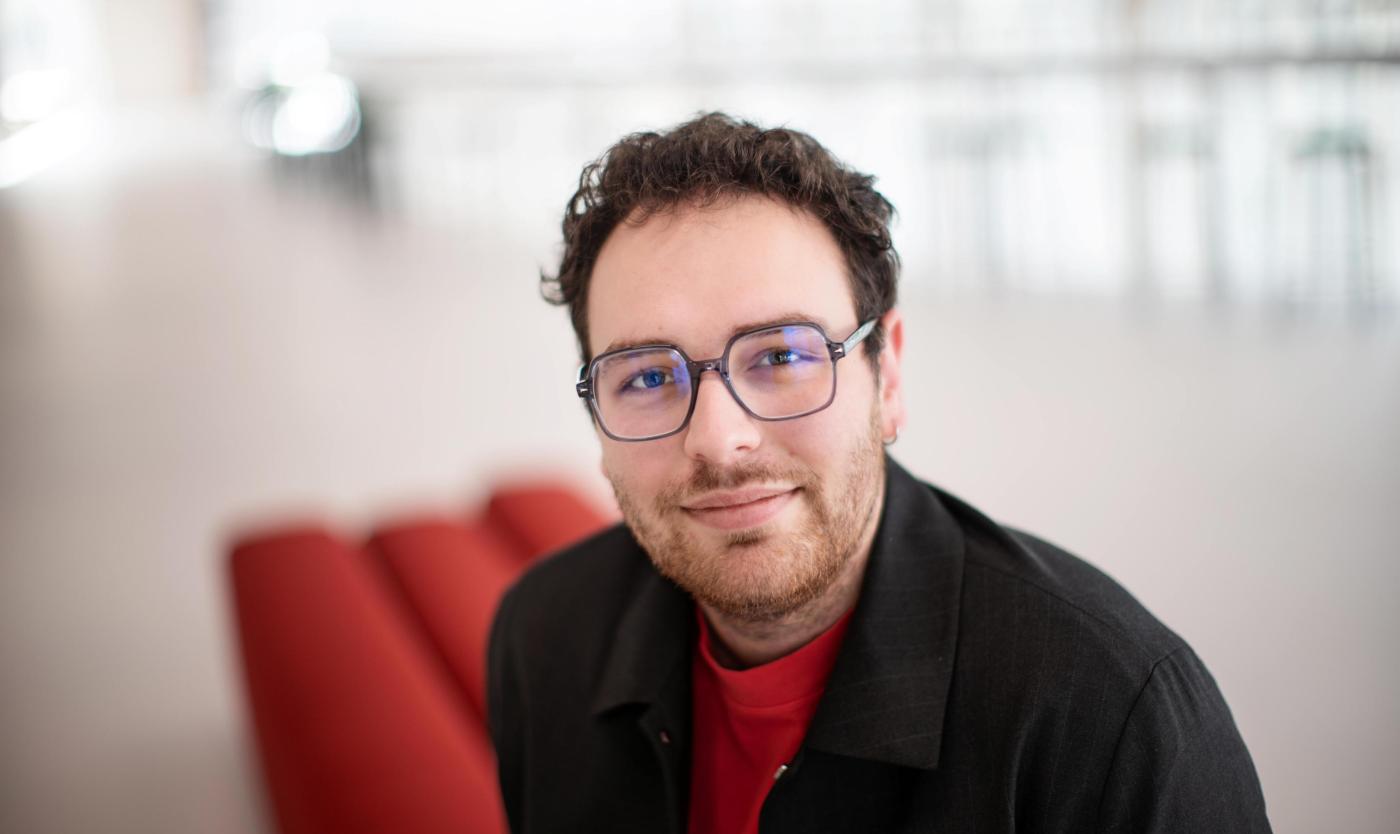
Wout Vanhelden, Chairman of the Student Council
“The LIC does what a building should do: it connects people and gives creativity the space to grow – both literally and figuratively”
What do you think of the LIC?
Wout Vanhelden: “I recently had the chance to visit, and it was a pleasant experience, both in terms of architecture and user space. The building feels very soft with all the natural elements, and I expect that the students will add their own colors to it. There was a huge need for study spaces, and what we’ve been advocating for as the Student Council is that students need a place where they can work undisturbed. That’s often not possible at the VUB or even in the private space of the students. On the other hand, there’s also the social and motivational effect of coming together. That’s also something the VUB stands for — it's not about competition between students to succeed, but about competing with the material, and you win that by working together and helping each other.”
I can imagine the Student Council thinks about other things besides just studying.
“For me, the LIC is primarily the place where VUB and ULB students can meet and where the energy of Brussels comes together. The outdoor space with its physical connection between the two campuses is also very fitting. But with the reception area, we can also get to know international students better. The LIC is a building that does what a building is supposed to do: it connects people and gives creativity both literally and figuratively the space to thrive.”
“The collaboration was already there on paper, but now we’re seeing the real connection between the people from both campuses. The bond with ULB can always be stronger. Especially with the political context in mind, I feel that we, as Brussels, need to collaborate and form a kind of front to advocate for ourselves. The LIC can play a key role in that.”
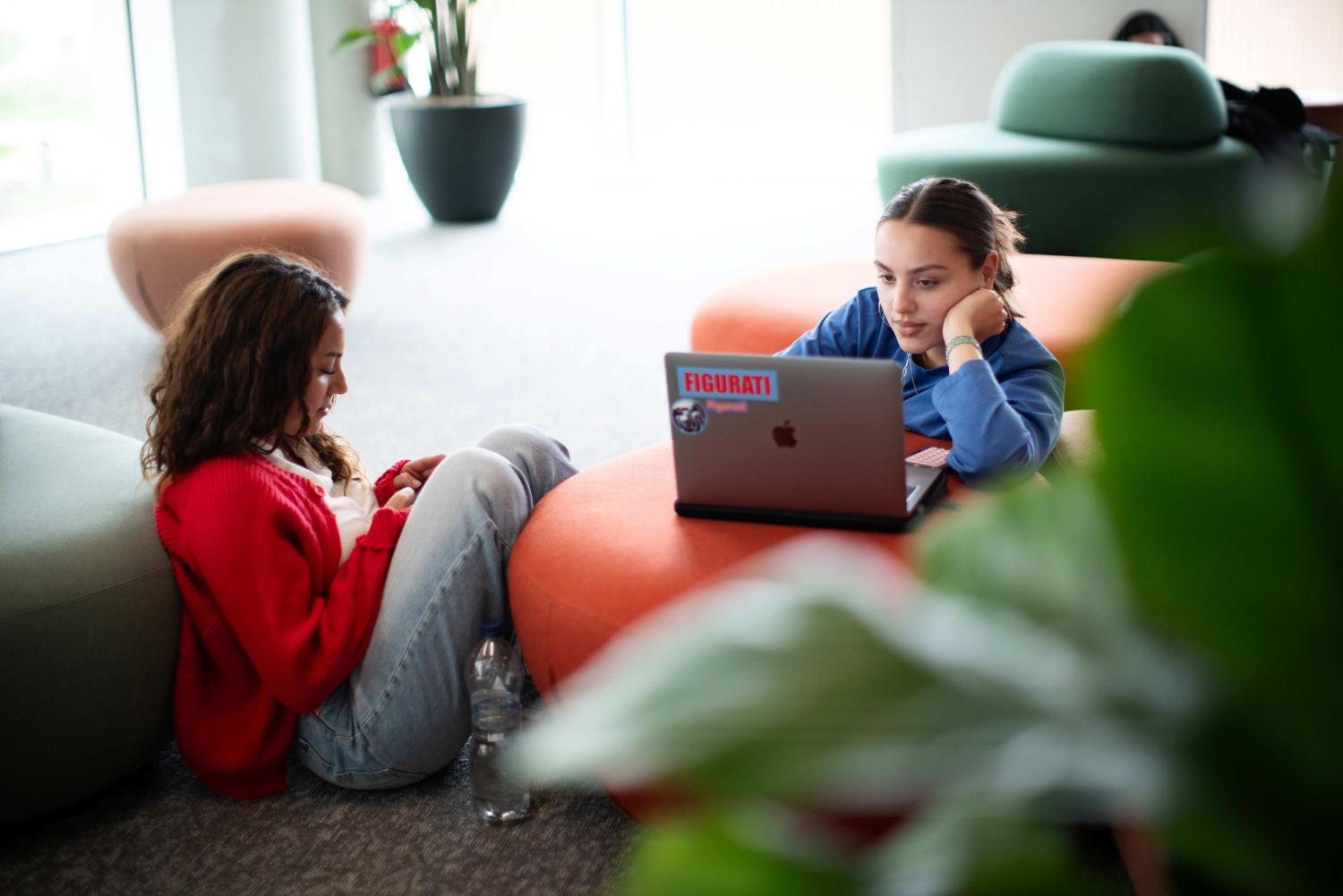
Students in the LIC
A glance across the campus boundary
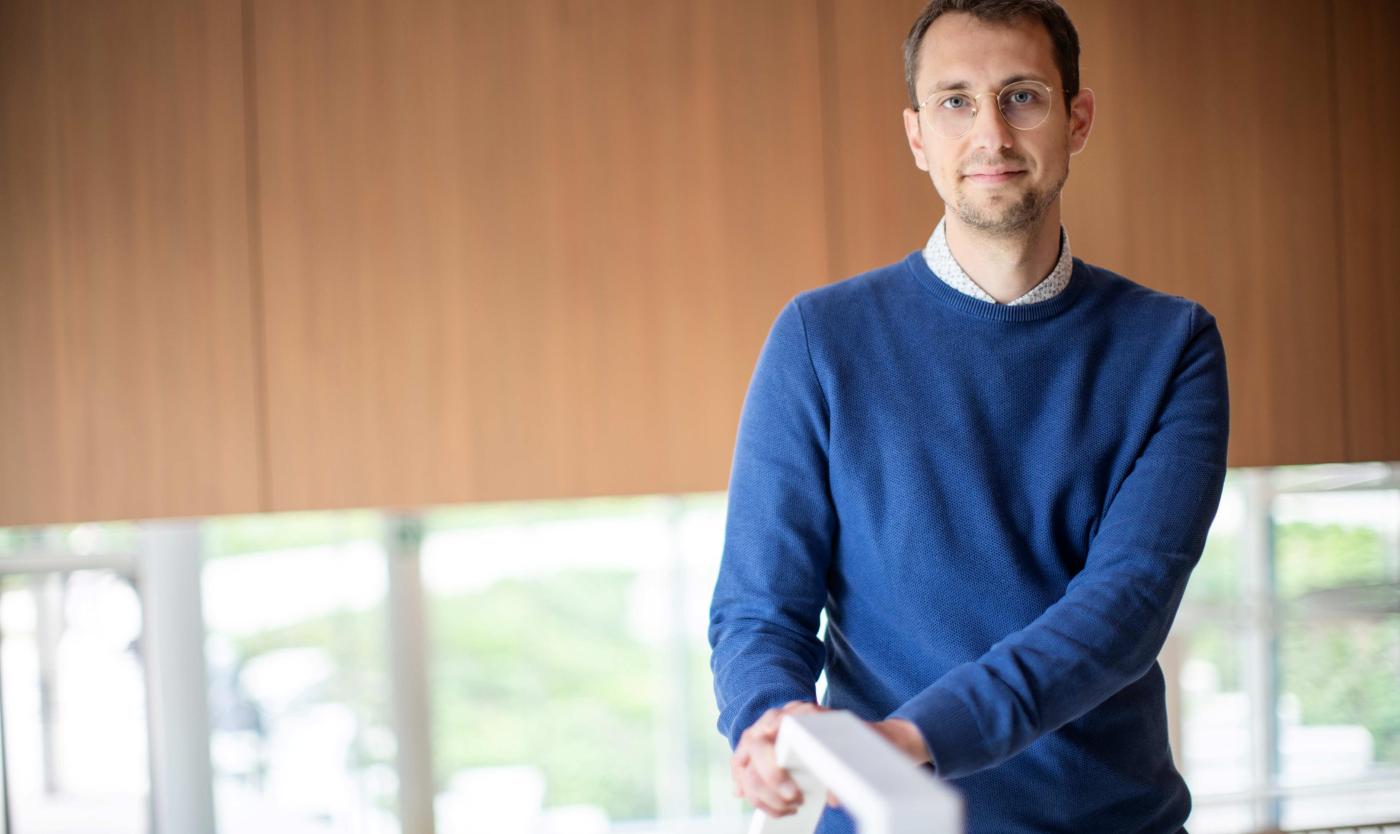
Bruno Leclercq, Director of the Library and Scientific Information Service at ULB
“Our librarians play a key role: they guide students in searching for, evaluating, and using digital resources”
How does this translate into practice?
Bruno Leclercq: “The LIC is much more than a place with books. It forms the beating heart of university life. Students come here not only to read and study but also to collaborate, relax, and exchange ideas.
The spaces are multifunctional and cleverly designed: from quiet zones to dynamic group spaces with screens and videoconferencing tools. We also invest in innovative learning environments such as recording studios, an immersive room, and flexible classroom setups. Teachers, librarians, and methodology experts work closely together. This way, students not only have access to knowledge but also to guidance and learning strategies – in a building that is future-proof and almost energy-neutral.”
What role does digitalization play?
“A major one. Especially in the exact and technical sciences, most resources are digital. Students need to learn how to work with these. Our librarians play a key role: they guide students in searching for, evaluating, and using information.”
Moving an entire library, like the one for sciences and engineering, must have been a big task?
“Indeed. But at the same time, it was a great opportunity to critically reassess our services and collection policies.”
How did you approach this practically?
“We chose a phased approach to minimize the impact on students and researchers: first, we moved the less frequently used depot collections, followed by the most consulted works from the open shelves. Thanks to a top team, dedicated student workers, and professional movers, everything went smoothly and without damage. We look back on it with pride.”
Do the ULB and VUB each have their own space, or is everything shared?
“Almost all spaces and services are shared. The integration will become even stronger in the future.”
